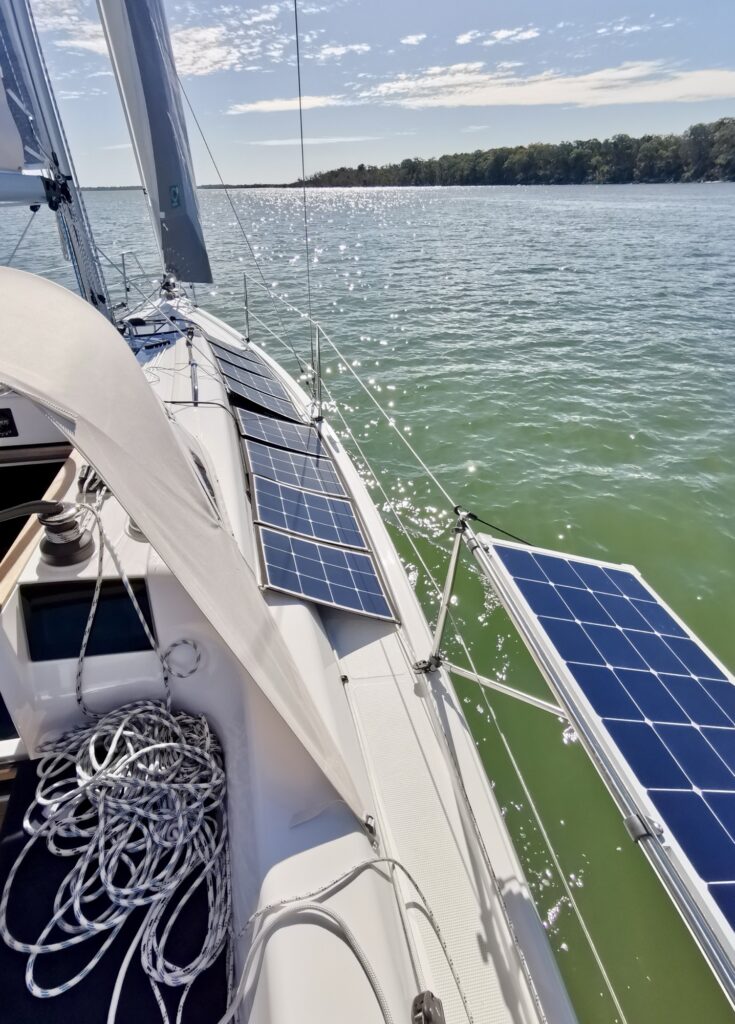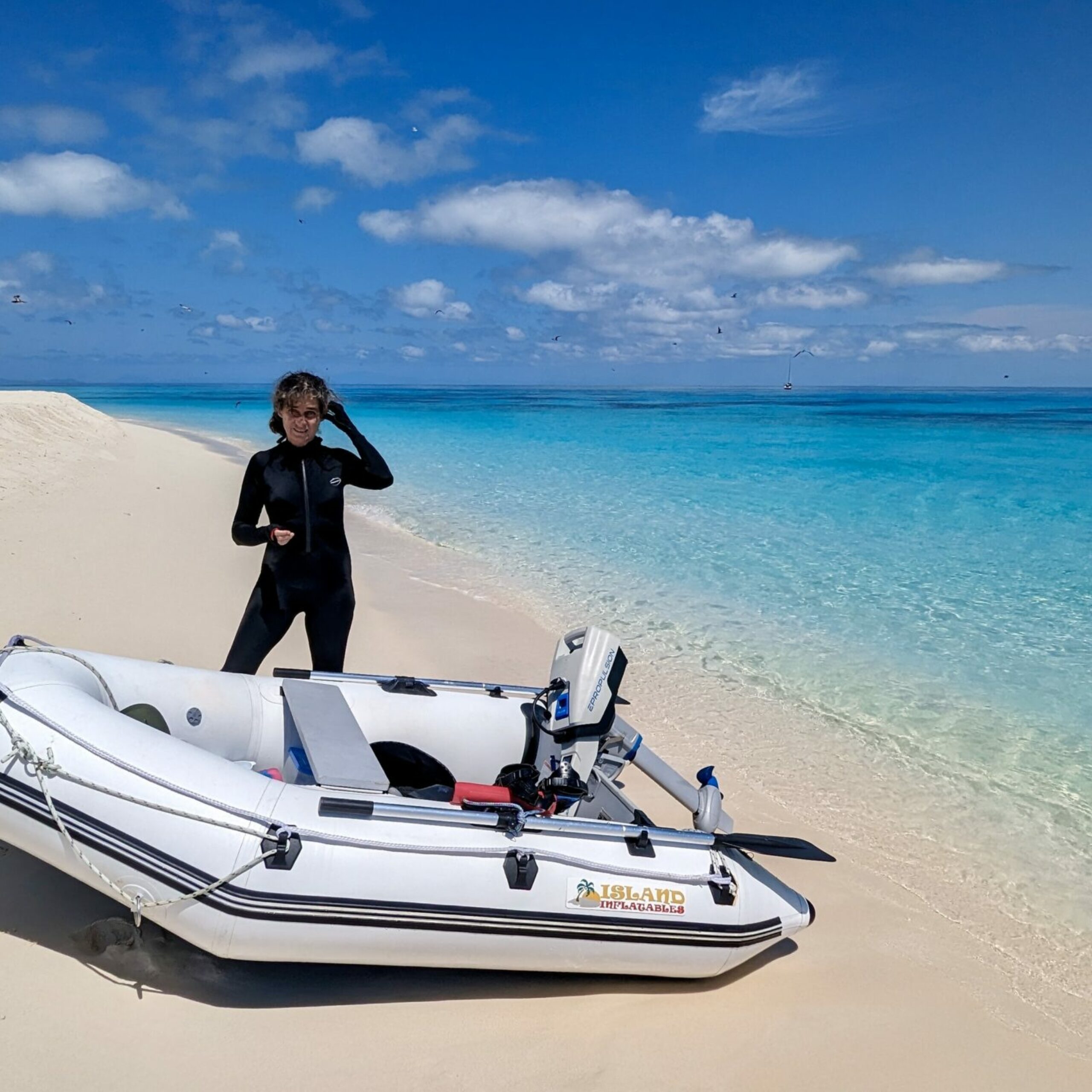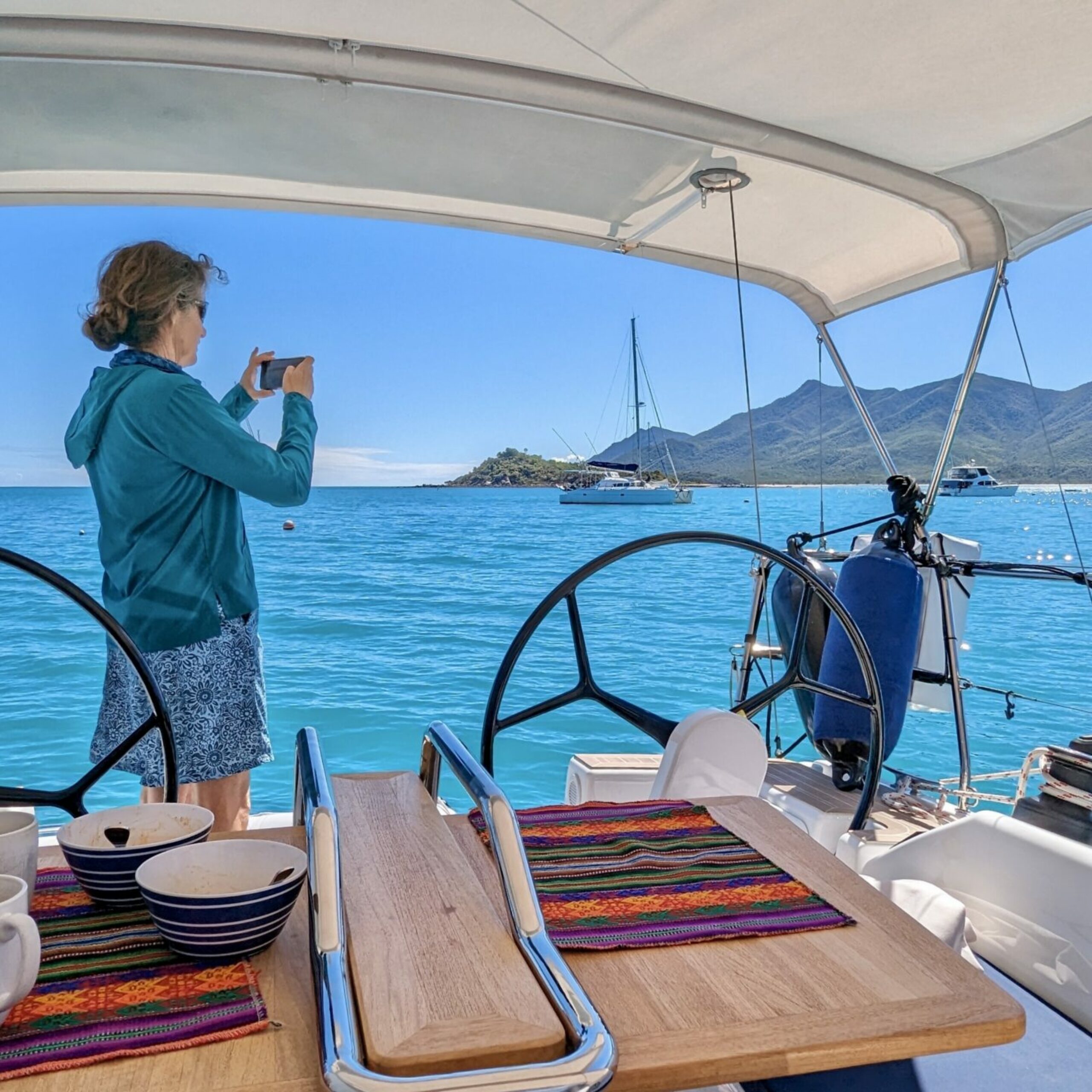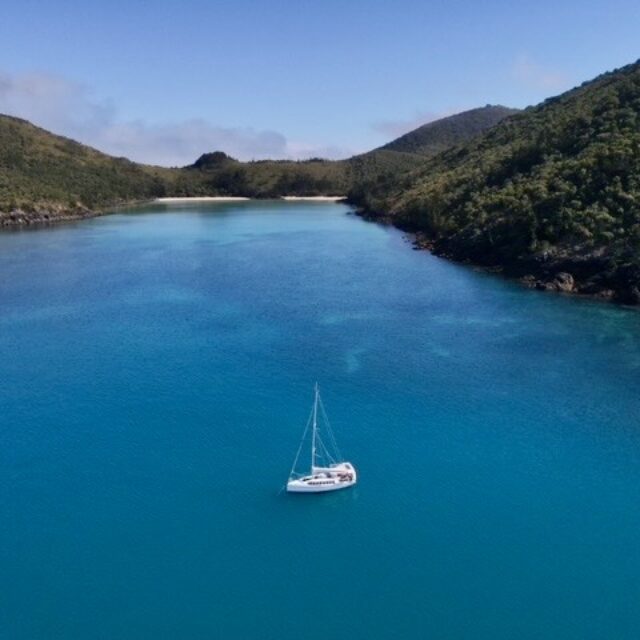Intent on finding a truly sustainable sailing yacht for extended cruising David and Lisa elected to be among the first owners of Hanse’s revolutionary adaption of electric propulsion.
Sailors often take comfort that in its purest form sailing harnesses the power of nature. In a good breeze with properly trimmed sails a minimal, a fast dispersing wake is all you leave.
In reality though the bigger your yacht, the larger the diesel engine required to power increasingly complex navigational, electrical, mechanical and communication systems.
The electric revolution is coming to sailing. Its delay is perplexing in a way but in time we’ll all hopefully be relying on electric propulsion. Hanse has been very proactive in this space, releasing an electric version of the Hanse 315 with a unique e-motion rudder drive that features a 4 kW electric engine and folding prop integrated into the rudder shaft.

David and Lisa Leckenby possess a commitment to looking after the planet quite a few of us aspire to but rarely achieve.
Delivered by Windcraft in May 2022, Elektra is the first fully electric production sailing yacht in Australia.
“I’m a tech enthusiast and was very interested in the technology behind the electrification of boats,” David explains.
“We have been on a bit of a project to de-carbonise our lives and see how much we could shrink our carbon footprint,” he continues. “We had done that with our house; we have an off-grid independently powered house, an electric car and the boat seemed to be the next thing to do,” he relates.
Two years later and an extended cruise of Australia’s east coast from Coffs Harbour to Cairns, the pioneering technology hasn’t missed a beat. “I would say we’ve certainly proven it can be done,” he says with some satisfaction. “During that entire time we only had to run our emergency (small petrol) generator once – and that was because we agreed to meet somebody and there was no wind for a whole week”. The rest of the time the couple charged Elektra’s two banks of batteries (house and propulsion), just off the boat’s various solar panels or shore power once they’d tied-up a marina or at a dock.
David cites the advantages of going electric as “silence, no fumes, never having to manoeuvre onto a fuel dock” and rates the Torqeedo Cruise 4.0 unit simpler and easier to operate than a diesel. The integrated engine in the rudder directs the thrust into the direction of the rudder. The extended rudder angle of 100 degrees allows the Hanse 315 to spin on her own axis.
He equates it as similar to steering with an outboard. Parking the boat bow in “was such a non-stressful event because you would just tie a line at the bow and you could just bring the stern into the pontoon,” he says.
“It does take a bit of getting used to as you need to think where the rudder is pointed where you make that transition from forward to reverse,” David admits. “Lisa does all the driving pretty much when we come into the marina because I’m the one jumping off the boat. Once she got her head around it she loved it,” he reveals.
The couple had ample time to familiarise themselves with Elektra’s innovative power plant during their island-hopping odyssey that took them to deserted anchorages in the Whitsundays and pristine coral cays close to the edge of the Great Barrier Reef. David recalls one particularly memorable night off Goldsmith Island.
“I was also woken up in the middle of the night by this noise and I was ‘what is that?’, thinking it was coming from the boat.
“Then I put my ear on the hull and it was very clearly the whales singing and it was resonating through the entire hull. I’d heard people talk about it but to experience it was pretty magic,” he recounts.
Another highlight was a side trip out to Taylor Reef, 30 miles east of Dunk Island and described in sailing blogs as:
A stunning spot that appeared to be just perfect; a quiet green (no fishing) zone with an ideal anchorage just 250m from a 140m long sand cay that remains exposed at high tide. Perhaps it would wash over in a big storm, but that didn’t bother the thousand marine birds who appeared to be enjoying something substantial to rest on. The cay was an amazing wisp of whiteness gleaming out from a turquoise sea.
“We just had perfect weather,” David recalls, “and it was the first time I’d ever been out in a yacht to the Reef. To be the only boat at a small sand cay and nothing but water on the horizon, crystal clear water, spectacular marine life. A very special experience,” he agrees.
To cope with the demands of self-sufficient cruising Elektra was fitted with a state-of-the-art Victron house electric system with enough power to allow induction cooking (3kw inverter/charger), and sufficient solar and battery storage (600ahr lithium) for weeks away from dockside resources.
Solar power is harvested from three separate sources; a bimini panel, two fold-out panels that you can optimise the angles mounted on the push-pit, and fold-out solar blankets on the deck. Combined they generate 750-800 watts, running the Torqeedo motor consumed 500 watts.
But sometimes you do need to motor through the night, as happened during a long run from Townsville down through to the Whitsundays. “We ran the motor at low speed nearly the entire way, with a bit of wind and getting the sun during the day the battery was on 70 per cent when we arrived,” David notes.
The whole system is monitored / controlled via a touchscreen panel or phone app that works both on the boat and remotely. Of course, comms are vitally important for weather forecasts and route planning as well as staying in touch with family so there’s internet access via a 4G modem/router with mast top antenna.
Having successfully undertaken the self-imposed challenge of being in the vanguard of electric cruising in Australia, David and Lisa have put Elektra on the market as they expand their cruising ambitions.
“We’ve already booked a charter boat for Vancouver Island (at 456 kilometres long and 100 kilometres wide Vancouver Island is roughly half the size of Tasmania) this August, we’ve heard it’s an amazing place to cruise,” he reveals. And their time on Elektra has irrevocably changed their outlook on what constitutes a comfortable and efficient cruising yacht.
“We’ve looked at many different boats, but once you’ve had an electric boat it’s very hard to go back to a diesel,” David acknowledges. He also admits the lure of the cruising lifestyle is hard to resist.
“It’s been the fulfillment of a life-long dream. It’s combined sense of freedom and adventure. On top of that you have the ability to visit some very special places only accessible to cruising boat owners. It’s a privilege to do that. We have met many wonderful people whom we now count as friends.”
Fortunately for David and Lisa, as well as other would-be electric converts, Hanse is offering another innovative electric propulsion option in the all-new Hanse 410. The system is based on an extremely efficient 100 Volt system integrated with a well-proven sail drive.
The electric sailing yacht may prove be the purest expression of the combination of wind, electric and solar power.
Click Here for more info on Elektra including price and specifications.
And Click Here for more information on the new Hanse 410














